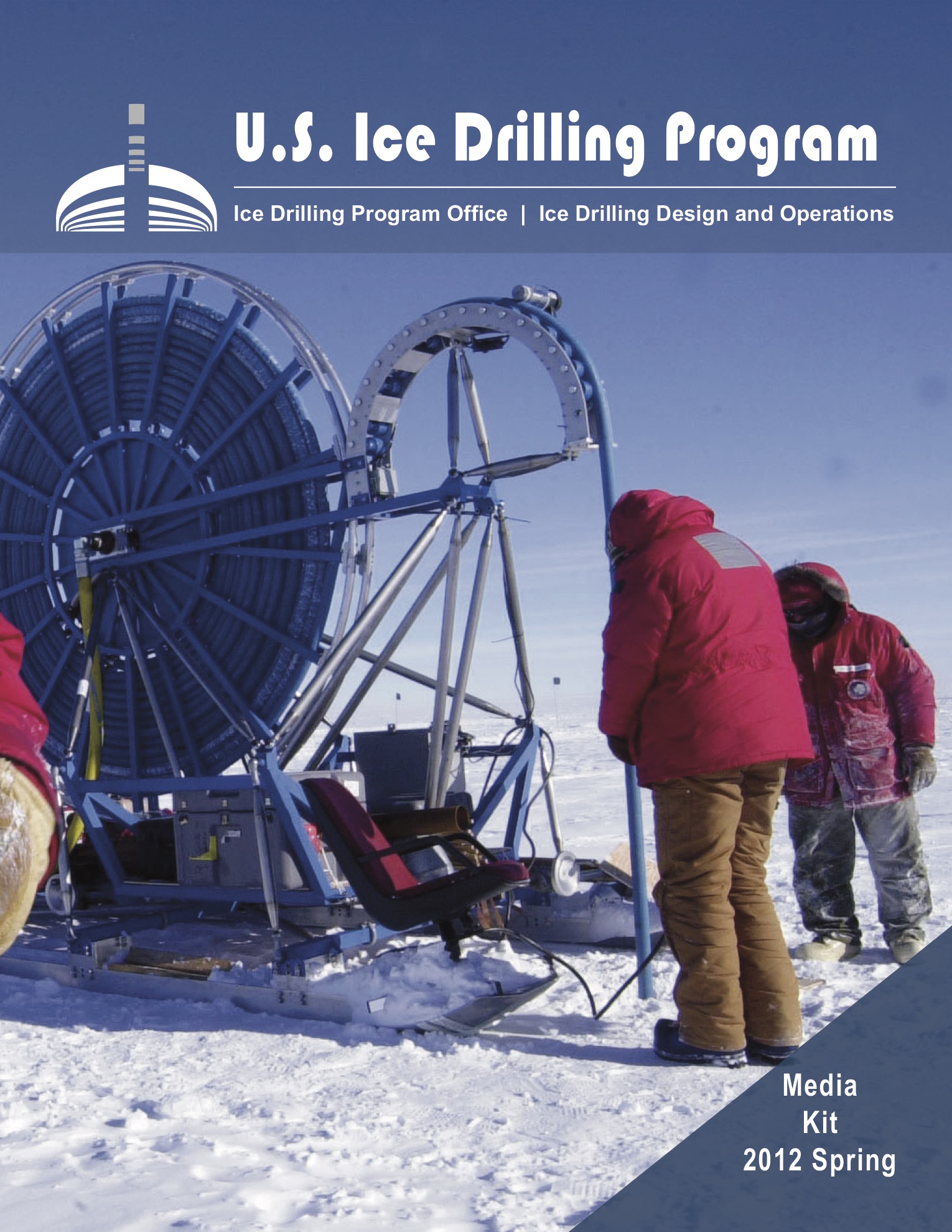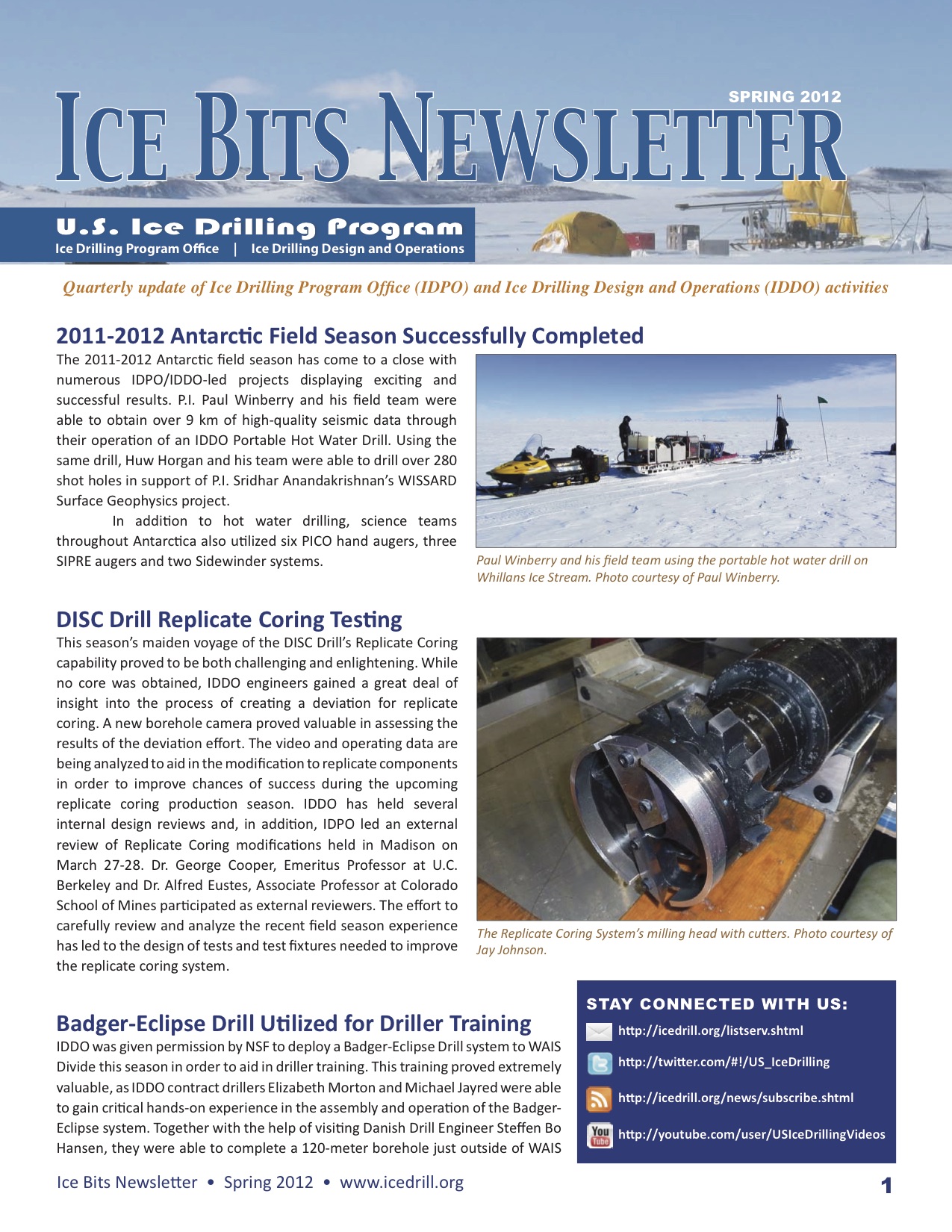During its 2012 meeting, the IDPO Science Advisory Board (SAB) voted to add elements to its structure to include standing working groups by including the existing Ice Core Working Group, and forming two new working groups: Borehole Logging and Subglacial Access Drilling. Other working groups may be added in the future if there is a need. Each working group will have a membership including a SAB member, and will hold virtual meetings through teleconferences and webinars to provide broader community input to the SAB for use in forming the IDPO Long Range Science Plan and other actions relevant to the working group interest.
Working Group on Subglacial Access Drilling (WGSAD)
The WGSAD represents the broad range of scientists interested in gaining data from beneath glaciers and ice sheets. The breadth of fields includes (but is not limited to) basement and bedrock geology, Cenozoic sedimentary basins, till, heat flow, exposure dating, stream hydrology (englacial, subglacial), geochemistry, limnology, oceanography, microbiology, etc. Ross Powell, currently on the SAB, is initially leading the group. Other standing SAB members currently representing these communities are Jill Mikucki for microbiology, and Howard Conway for exposure dating.
Working Group on Borehole Logging (WGBL)
The WGBL represents the broad range of scientists interested in deploying logging instruments in glaciers and ice sheets. Ryan Bay and Gary Clow, who are both currently on the SAB, are initially leading the group.
*** If you are interested in contributing to the WGSAD or the WGBL and advising on future paths the U.S. ice drilling program should take, please notify Joseph Souney of IDPO at joseph.souney@unh.edu by May 18. ***
Ice Core Working Group (ICWG)
The ICWG is an established group of scientist who investigate scientific issues pertaining to ice cores. Members are selected from the scientific community and their role consists of providing guidance to the NSF on topics related to sample access, distribution, inventory, policy issues, operation and maintenance of the National Ice Core Laboratory (NICL), and future directions for ice core research. Karl Kreutz, who is currently on the SAB, is the current chair of the ICWG. For more information about the ICWG, visit: http://nicl-smo.unh.edu/icwg/index.shtml
For more information about the SAB, its Working Groups, and to access SAB-related documents, visit: http://icedrill.org/about/sab.shtml





